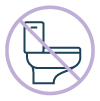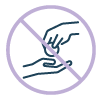Learning Objectives
By the end of this topic, the student should be able to:
- Describe practices related to use, storage, and disposal of prescribed opioids.
- Identify safety recommendations related to the use, storage, and disposal of opioid preparations.
- Recognize the importance of using a variety of education materials and programs related to the safe use, storage, and disposal of opioid preparations.
Key Concepts
- Unused opioids in the home increase the risk of inappropriate use.
- Unauthorized or improper storage of opioids can lead to diversion of the medication and accidental poisonings.
- Pain medications are a leading cause of poisoning in children and pets.
- The environmental impact of the disposal of opioids must be considered when selecting disposal options.
- Alcohol and other psychoactive substances increase the risk of death among individuals using opioids.
- Educational programs for people prescribed opioids and their families and caregivers should be comprehensive and frequent to foster safe use, storage, and disposal.
Current Practices Related to Opioid Use, Storage, and Disposal
NOTE: Opioids are one of the most common causes of accidental poisoning. Thousands have died in Canada as a result (Canadian Institute for Health Information & Canadian Centre on Substance Abuse, 2016).
Inappropriate or inadequate storage, disposal, or diversion of unused opioids is a leading cause of unauthorized access to opioids. Comprehensive recommendations are available to guide the safe use, storage, and disposal of opioids.
Definition
- Diversion
- A legal concept used to describe the transfer of legally prescribed controlled substances from the person they were prescribed for to others for unauthorized, illegal, or illicit use.
Diversion can occur by sharing controlled substances or making them available for sale.

- A U.S. study (Lewis et al., 2014) of 191 veterans who had been prescribed opioids over a 12-month period found the following:
- Only 6.3 percent of participants had disposed of unused opioids.
- 24 percent had no unused product while 65.4 percent had retained some or all of the product they had been prescribed.
- 34 percent reported having been involved in sharing or diverting the opioids in their possession (Lewis et al., 2014).
- Bicket et al.’s (2017) systemic review of opioids commonly prescribed for postoperative pain reported that 67 to 92 percent of participants had unused opioids in their homes, and 73 to 77 percent of these products were not stored in a locked cabinet or container
- Similar findings were reported in a study by Reddy et al. (2014) of 300 adult cancer clients who had been prescribed opioids for pain management.
- Overall, 46 percent of respondents had unused opioid medication in their homes.
- 19 percent of participants reported keeping opioids in plain sight, while 69 percent kept the medication hidden but not secured.
- 26 percent reported unsafe use, with 9 percent sharing medication and 17 percent admitting to losing medication.
- 74 percent reported being unaware of local disposal methods.
CAGE Substance Abuse Screening Tool
The CAGE (Cut down, Annoyed, Guilty, Eye-opener) screening tool is useful for assessment purposes. A positive CAGE score is associated with a greater likelihood of recreational drug use, abuse, and opioid dose escalation.
The CAGE questionnaire for alcohol and drug use is available from Johns Hopkins Medicine: CAGE Substance Abuse Screening Tool (PDF)
Recommendations for Safe Use of Opioids
Clients must take medication only as prescribed and the dose should not be increased without consulting a health and social service provider (dose escalation).
- Medication should be used only as directed. Incorrect use (crushing, cutting, breaking, chewing, or dissolving opioids) can cause serious harm, including death.
- Medications should not be shared with others, given away, or sold. Taking opioids with medications meant to reduce anxiety (such as benzodiazepines) can increase the risk of serious adverse effects, including respiratory depression (slowed breathing) and overdose.
- Using pain medication for purposes other than pain management can lead to dependence or opioid use disorder, as will prolonged use of opioids for pain management.
- Opioids should not be used if pregnant without consulting the prescriber or health and social service practitioner.
Recommendations for Safe Storage of Opioids
Others in the household, including family, visitors, children, and pets, should not have access to the medications.

- Opioids should be stored in a locked location, cabinet, or container if possible.
- If a lock up is not possible, they should be stored in a hidden location at a height that cannot be accessed by a child.
- The secure location should be easily accessible by the person who has been authorized to use the medication.
- Medication should be kept in the original packaging that includes information about the person the medication is intended for and instructions for use.
- How much medication has been used on a daily basis should be monitored by using a medication log, either a paper-based or an online tracking tool.
Recommendations for Safe Disposal of Opioids

Opioids (including used patches) should never be thrown into household garbage cans where children and pets can find them. The Institute for Safe Medication Practices Canada (2018) criteria for safe disposal maintain that disposal should:
- be easy to perform,
- minimize the risk for diversion,
- not impose a financial burden on the client or user, and
- be environmentally sound.

Medication should be disposed of at an authorized disposal site—for example, a local participating pharmacy.
See the Health Products Stewardship Association website for additional information about locations and processes for safe disposal: Safely return unwanted medications and medical sharps

Do not flush
Health Canada (2014) does not recommend that medication be flushed down the toilet as there are concerns about the environmental impact of this practice.
Less ideal approaches
Alternative disposal measures have been suggested, but these are not ideal or the desired approach. Alternatives suggested include mixing tablets in the original container with water and unpleasant substances like coffee grounds or kitty litter, removing the information from the package, and sealing the container with duct tape, and then putting it in a second sealed container before putting in the garbage. Be aware that garbage or trash containers are vulnerable to tampering by children and pets.
Disposal of opioid patches
The general recommendation for the disposal of opioid patches is to fold the used patch in half with the adhesive surface on the inside, put it in a locked box or sharps container, and return it to the pharmacy or hospital, depending on the program in the area.
- Some jurisdictions have a legislated Patch-for-Patch Fentanyl Return Policy to reduce the risk and harm related to the diversion or other use of patches.
NOTE: Used patches should never be put in the trash or garbage as they are very dangerous for children and pets who might access them.
Educational Programs
Educating clients about the use, storage, and disposal of opioids is essential. Comprehensive and frequent education is indicated.

- A randomized control trial comparing usual care (verbal instructions about the safe use of opioids) and a written educational pamphlet was conducted in a U.S. emergency room (ER). Participants were people discharged from the ER with opioids (hydromorphone/acetaminophen) for pain. One hundred and ten people received the usual care, and 100 received the educational program and a follow-up telephone call four to seven days after discharge. The results demonstrated that while the educational pamphlet and follow-up phone had a positive effect on the retention of some information, the retention was not consistent. More comprehensive approaches to education are recommended (McCarthy et al., 2015).
Safe use and storage should be reviewed by health and social service providers at all visits. Clients can be provided with printed material to keep at home as a reminder.

Ongoing discussions with clients regarding pressure to share medication and possible scripts or strategies to use to address this pressure may be warranted and helpful.

Additional Resources
The Institute for Safe Medication Practices Canada has client education handouts for use in health and social service practices (ISMP, 2018):
Questions
References
American Academy of Family Physicians. (2019). Safe use, storage, and disposal of opioid drugs. FamilyDoctor.org. https://familydoctor.org/safe-use-storage-and-disposal-of-opioid-drugs/
American Association of Orthopedic Surgeons. (2016). Safe use, storage, and disposal of prescription opioid medications. https://www.aaos.org/globalassets/quality-and-practice-resources/patient-safety/pain-alleviation-toolkit/aaos-asa_safe-use-storage-and-disposal-of-prescription-opioid-medications.pdf
Bicket, M. C., Long, J. J., Pronovost, P. J., Alexander, G. C., & Wu, C. L. (2017). Prescription opioid analgesics commonly unused after surgery: A systematic review. JAMA Surgery, 152(11), 1066–1071.
Canadian Institute for Health Information & Canadian Centre on Substance Abuse. (2016). Hospitalizations and emergency department visits due to opioid poisoning in Canada. https://secure.cihi.ca/free_products/Opioid%20Poisoning%20Report%20%20EN.pdf
Health Canada. (2014). Safe disposal of prescription drugs. https://www.canada.ca/en/health-canada/services/safe-disposal-prescription-drugs.html
Institute for Safe Medication Practices (ISMP) Canada. (2018). Safe storage and disposal of medications. https://www.ismp-canada.org/download/safetyBulletins/2018/ISMPCSB2018-06-StorageDisposal.pdf
Lewis, E. T., Cucciare, M. A., & Trafton, J. A. (2014). What do patients do with unused opioid medication? Clinical Journal of Pain, 30(8), 654–662.
McCarthy, D. M., Wolf, M. S., McConnell, R., Sears, J., Chevrier, A., Ahlstrom, Engel, K. G., Cameron, K. A., Adams, J. G., & Courtney, D. M. (2015). Improving patient knowledge and safe use of opioids: a randomized control trial. Academic Emergency Medicine, 22(3), 331–339. https://doi.org/10.1111/acem.12600
Reddy, A., de la Cruz, M., Rodriguez, E. M., Thames, J., Wu, J., Chisholm, G., Li, D., Frisbee-Hume, S., Yennurajalingam, S., Hui, D., Cantu, H., Marin, A., Gayle, V., Shinn, N., Xu, A., Williams, J., & Bruera, E. (2014). Patterns of storage, use and disposal of opioids among cancer outpatients. Oncologist, 19(7), 780–785.